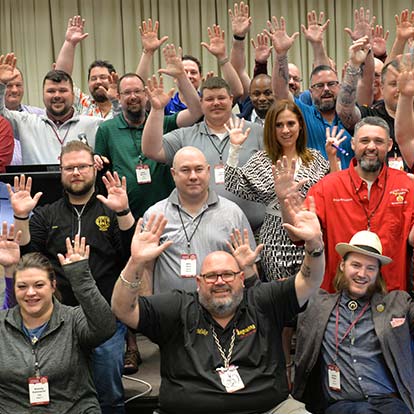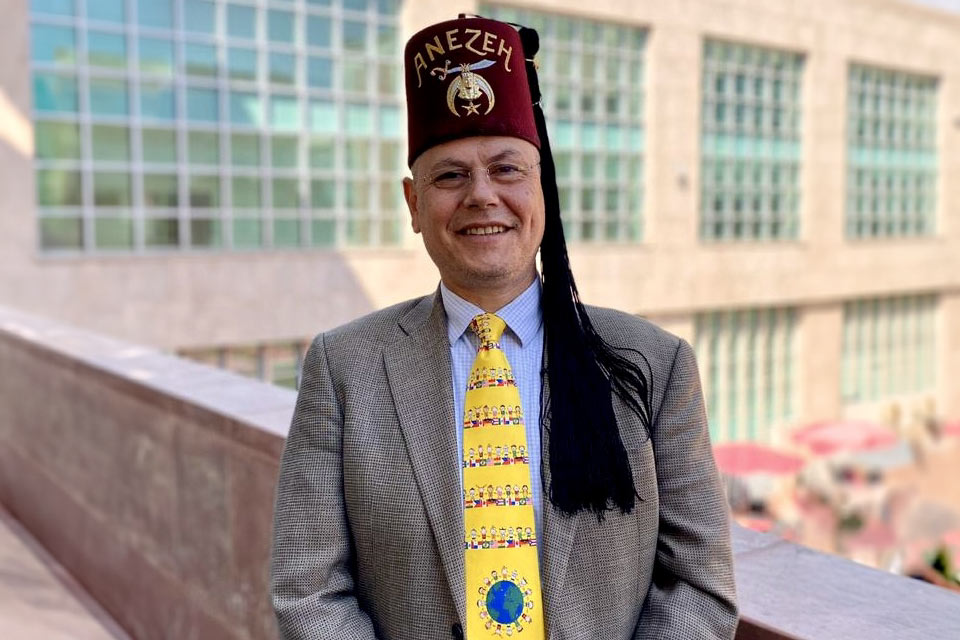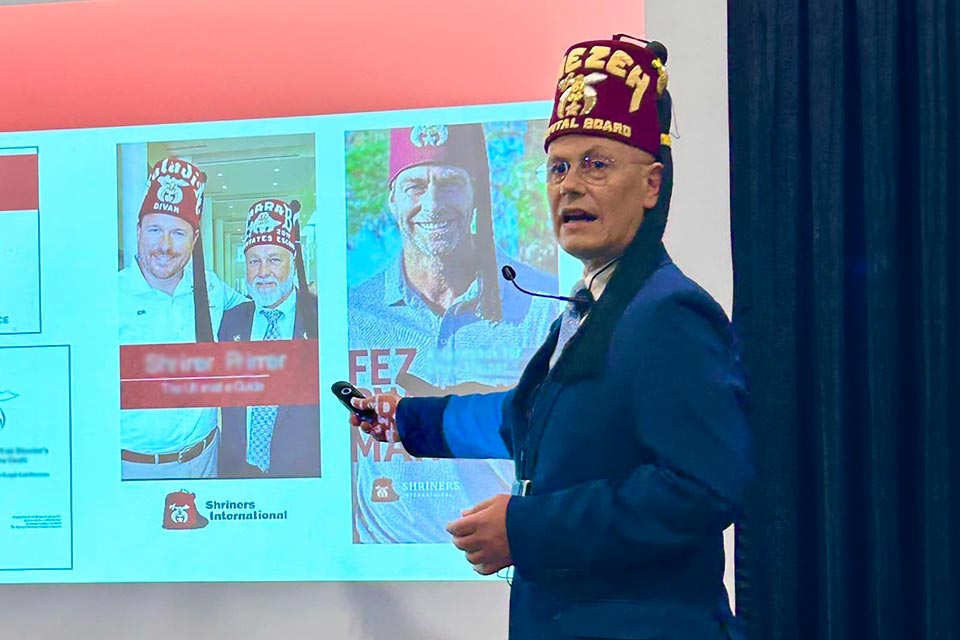
Leading the Way in Latin America

Regional Membership Director Adrian Aguayo Finds a Formula That Works
Judging from their Instagram posts, Shriners in Brazil and Mexico spend a lot of time going to hard rock concerts and riding motorcycles. They’re a young crowd.
Perhaps not coincidentally, the Shriners temples south of the U.S. border – in Mexico and Brazil, especially – are vibrant and growing fast.
In fact, all six of the chapters in Brazil and Mexico had membership growth last year that was close to or better than 10%. Topping the list: Hikmat Shriners in Mato Grosso, Brazil, rang in at 34% growth, and Salah Shriners in Florianapolis, Brazil, posted a phenomenal 54%.
Overall, 11 of the 12 temples in Region 15 had growth above 3%. (The region includes all the international chapters: those in Latin America, as well as the ones in Germany, Lebanon and the Philippines.)
What’s going on down there?
We called Adrian Aguayo Macias, the regional membership director for Region 15, to find out.
Youth
The average age of new Shriners in the international temples is a big factor, according to Adrian, who is a member of Anezeh Shriners. Masons and Shriners are generally younger in Mexico and the South and Central American countries. With younger people assuming leadership, a domino effect is created, Adrian said, attracting in other men who tend to be at that point in their lives when they are open to committing to a fraternity.
“Masonry throughout Latin America is more of a younger organization (than it is in the U.S.),” he said.
“It’s all about fun and fellowship in those younger clubs,” said Bryan Harrison, Chief Membership Development Officer for Shriners International, agreeing with the assessment that youth is begetting youth. “It is how the temples are marketing Shriners.”
Outreach
Another factor fostering the growth, at least in Mexico, is outreach. In 2018, Anezeh Potentate Eduardo Perez took an extensive tour of the country, visiting Masonic lodges all over Mexico and showing the fez around.
There was a real spike in membership following that outreach. “For years, Anezeh Shriners was only working with people in Mexico City,” Adrian said. “But that tour created a lot more awareness.”

Social Media
Social media has spurred growth, in Mexico and in Latin America overall, Adrian said. Before Instagram, TikTok and Facebook, people outside the major population centers never had exposure to the fraternity and the fellowship. Now they are attracted by social media posts showing rock concerts and gleaming motorcycles.
“Social media allows the Masons to realize we are here,” Adrian said.
With the new visibility provided by social media, more and more Masons are realizing there’s something special about the Shriners fraternity, and that it is something they would enjoy being a part of.
Mission
Last, but not least by any means, the Shriners philanthropy is a serious draw. New members join to further the healthcare mission and bring it to their local areas. There is a synergy. For example, Shriners Children's presence in Mexico is growing and, with it, the clubs and temples.
In addition to the already existing Mexico City hospital and the Tijuana and Monterrey clinics, new clinics recently opened in Culiacan and Guadalajara, and another is set to open later this year. Al Atfal Shriners, in Culiacan, had 13% growth last year.
In Brazil, the Salah temple is the most recently chartered temple in the country. Driven to improve access to specialty healthcare for children in their state, Salah Shriners helped renovate and reopen a shuttered pediatric burn unit at a local hospital. Salah temple membership grew 54% this past year.
Adrian said that at first, he wasn’t much interested in either Masonry or Shriners. He didn’t know anything about the organizations. But one day a friend who was a Shriner took him to the Mexico City hospital, where fraternity members were performing a clown show. And that did it. He was taken by the mission immediately.
Adrian became a Mason, then donned the fez as quickly as he could.
“Even with the public system we have in Mexico, it is really a blessing for us to have the Shriners Children’s Mexico City hospital here,” he said. “We are definitely in a much better position to help a lot of children.”
Anezeh Shriners, in Mexico City, had 280 members in 2017. Today, Adrian said, there are 1,180.
Leading the Way
Imperial Sir Ron DeVoll said Shriners International leadership is definitely paying attention to what is happening in Latin America with respect to membership.
He heaps praise on Noble Adrian, describing him as receptive, conscientious and energetic. Imperial Sir Ron said Adrian’s efforts have been essential to fostering the growth the region has been experiencing.
“Adrian’s a huge asset to our fraternity,” Ron said.
“We’ve noticed our international chapters,” he added. “When we are working on increasing membership in our fraternity, we are having conversations about what we all can learn from the growth they are experiencing in Latin America and elsewhere.”
Stay in Touch
Join our mailing list to keep up-to-date on all that's happening at Shriners International.

